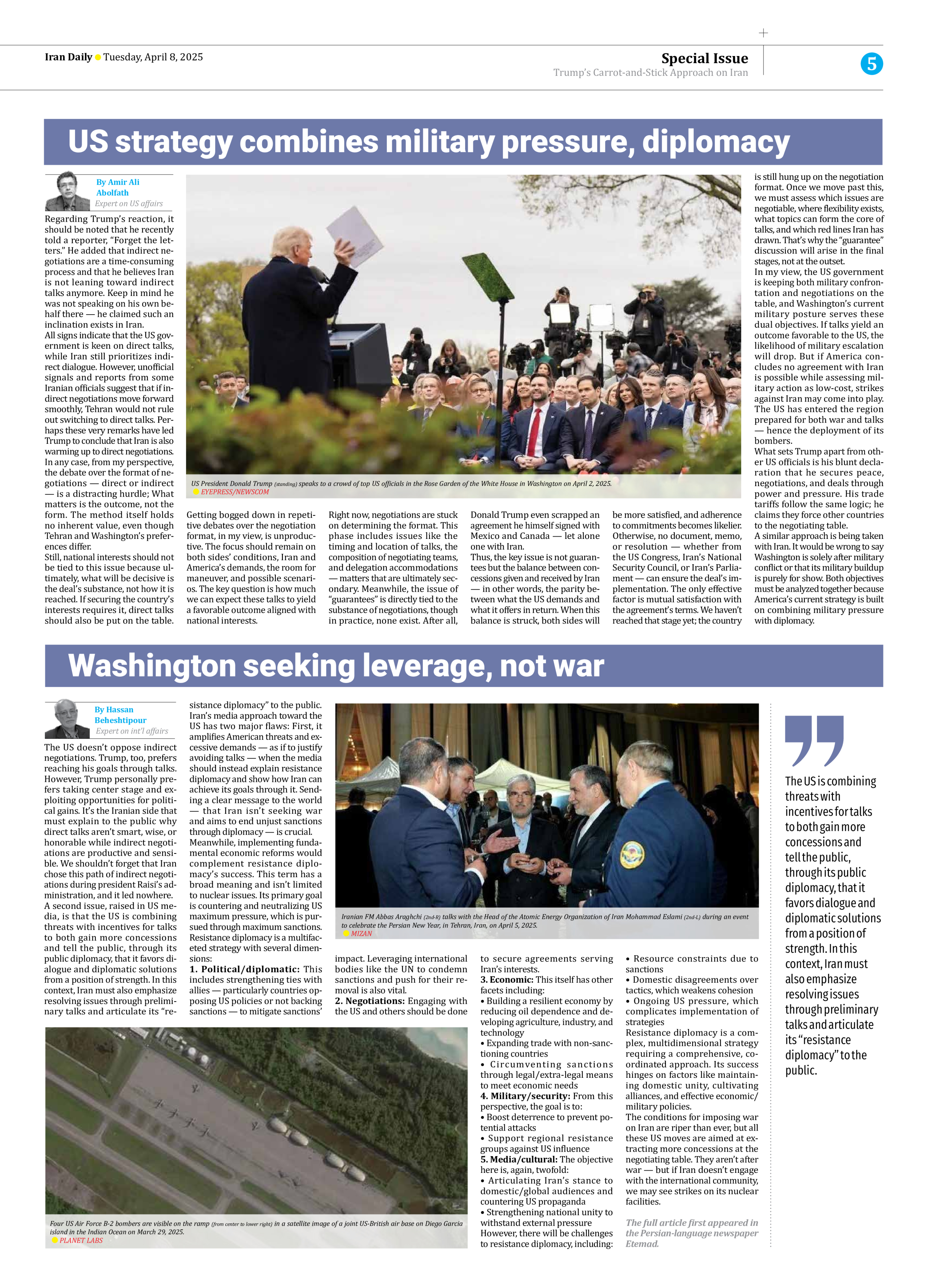
Washington seeking leverage, not war
By Hassan
Beheshtipour
Expert on int’l affairs
The US doesn’t oppose indirect negotiations. Trump, too, prefers reaching his goals through talks. However, Trump personally prefers taking center stage and exploiting opportunities for political gains. It’s the Iranian side that must explain to the public why direct talks aren’t smart, wise, or honorable while indirect negotiations are productive and sensible. We shouldn’t forget that Iran chose this path of indirect negotiations during president Raisi’s administration, and it led nowhere.
A second issue, raised in US media, is that the US is combining threats with incentives for talks to both gain more concessions and tell the public, through its public diplomacy, that it favors dialogue and diplomatic solutions from a position of strength. In this context, Iran must also emphasize resolving issues through preliminary talks and articulate its “resistance diplomacy” to the public.
Iran’s media approach toward the US has two major flaws: First, it amplifies American threats and excessive demands — as if to justify avoiding talks — when the media should instead explain resistance diplomacy and show how Iran can achieve its goals through it. Sending a clear message to the world — that Iran isn’t seeking war and aims to end unjust sanctions through diplomacy — is crucial.
Meanwhile, implementing fundamental economic reforms would complement resistance diplomacy’s success. This term has a broad meaning and isn’t limited to nuclear issues. Its primary goal is countering and neutralizing US maximum pressure, which is pursued through maximum sanctions. Resistance diplomacy is a multifaceted strategy with several dimensions:
1. Political/diplomatic: This includes strengthening ties with allies — particularly countries opposing US policies or not backing sanctions — to mitigate sanctions’ impact. Leveraging international bodies like the UN to condemn sanctions and push for their removal is also vital.
2. Negotiations: Engaging with the US and others should be done to secure agreements serving Iran’s interests.
3. Economic: This itself has other facets including:
• Building a resilient economy by reducing oil dependence and developing agriculture, industry, and technology
• Expanding trade with non-sanctioning countries
• Circumventing sanctions through legal/extra-legal means to meet economic needs
4. Military/security: From this perspective, the goal is to:
• Boost deterrence to prevent potential attacks
• Support regional resistance groups against US influence
5. Media/cultural: The objective here is, again, twofold:
• Articulating Iran’s stance to domestic/global audiences and countering US propaganda
• Strengthening national unity to withstand external pressure
However, there will be challenges to resistance diplomacy, including:
• Resource constraints due to sanctions
• Domestic disagreements over tactics, which weakens cohesion
• Ongoing US pressure, which complicates implementation of strategies
Resistance diplomacy is a complex, multidimensional strategy requiring a comprehensive, coordinated approach. Its success hinges on factors like maintaining domestic unity, cultivating alliances, and effective economic/military policies.
The conditions for imposing war on Iran are riper than ever, but all these US moves are aimed at extracting more concessions at the negotiating table. They aren’t after war — but if Iran doesn’t engage with the international community, we may see strikes on its nuclear facilities.
The full article first appeared in the Persian-language newspaper Etemad.







